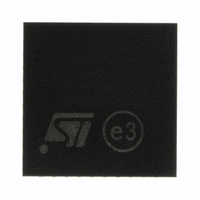SN260Q STMicroelectronics, SN260Q Datasheet - Page 30

SN260Q
Manufacturer Part Number
SN260Q
Description
IC ZIGBEE/802.15.4 PROC 40-QFN
Manufacturer
STMicroelectronics
Datasheet
1.SN260Q.pdf
(47 pages)
Specifications of SN260Q
Frequency
2.4GHz
Modulation Or Protocol
802.15.4
Applications
ZigBee™
Power - Output
-32dBm ~ 5dBm
Sensitivity
-97.5dBm
Voltage - Supply
2.1 V ~ 3.6 V
Current - Receiving
35.5mA
Current - Transmitting
35.5mA
Data Interface
PCB, Surface Mount
Antenna Connector
PCB, Surface Mount
Operating Temperature
-40°C ~ 85°C
Package / Case
40-QFN
For Use With
497-6404 - BOARD EVAL SPZB260 MOD FOR STR9497-5990 - KIT EVAL REVA FOR ZIGBEE497-5879 - NETWORK DEVELOPMENT FOR SN260497-5877 - KIT RADIO CARRIER FOR SN260
Lead Free Status / RoHS Status
Lead free / RoHS Compliant
Memory Size
-
Data Rate - Maximum
-
SPI protocol
7.6.2
7.7
7.7.1
30/47
SN260 in reset. While nRESET is asserted, assert (active low) either nWAKE or PTI_DATA
and then deassert nRESET to boot the SN260. Do not deassert nWAKE or PTI_DATA until
the SN260 asserts nHOST_INT, indicating that the SN260 has fully booted and is ready to
accept data over the SPI Protocol. Once nHOST_INT is asserted, nWAKE or PTI_DATA way
be deasserted. Refer to the EmberZNet Application Developer’s Guide (120-4028-000) for
more information on the bootloader and the format of the Bootloader Frame.
Unexpected resets
The SN260 is designed to protect itself against undefined behavior due to unexpected
resets. The protection is based on the state of Slave Select since the inter-command
spacing mandates that Slave Select must return to idle. The SN260’s internal SPI Protocol
uses Slave Select returning to idle as a trigger to re-initialize its SPI Protocol. By always re-
initializing, the SN260 is protected against the Host unexpectedly resetting or terminating a
transaction. Additionally, if Slave Select is active when the SN260 powers on, the SN260 will
ignore SPI data until Slave Select returns to idle. By ignoring SPI traffic until idle, the SN260
will not begin receiving in the middle of a transaction.
If the Host resets, in most cases it should reset the SN260 as well so that both devices are
once again in the same state: freshly booted. Alternately, the Host can attempt to recover
from the reset by recovering its previous state and resynchronizing with the state of the
SN260.
If the SN260 resets during a transaction, the Host can expect either a Wait Section timeout
or a missing Frame Terminator indicating an invalid Response.
If the SN260 resets outside of a transaction, the Host should proceed normally.
Transaction examples
This section contains the following transaction examples:
●
●
●
●
SPI protocol version
Figure 9.
SPI protocol version
EmberZNet serial protocol frame — Version command
SN260 reset
Three-part transaction: Wake, Get Version, Stack Status Callback
SPI protocol version example
SN260












